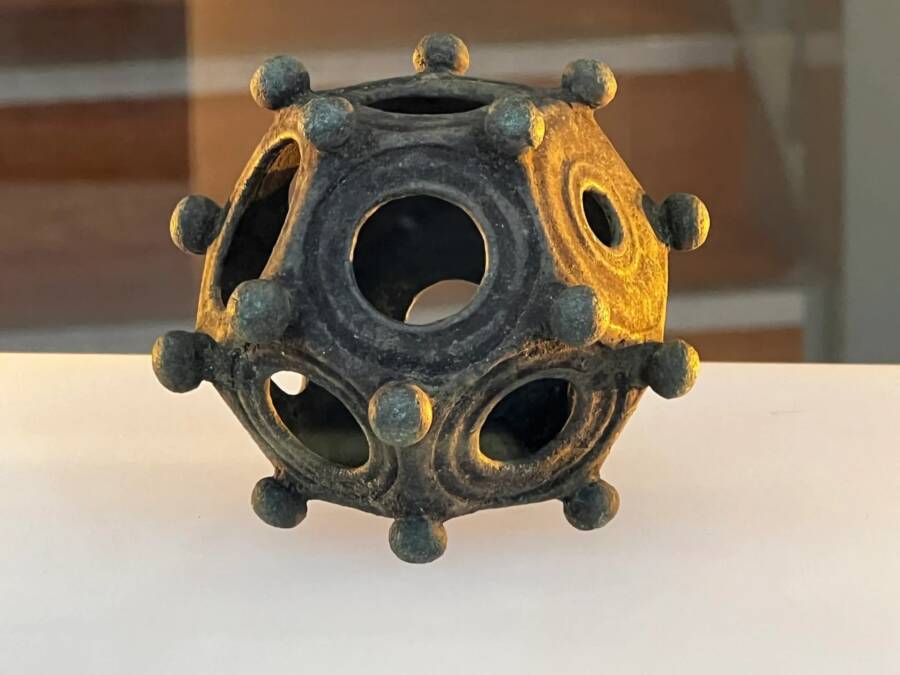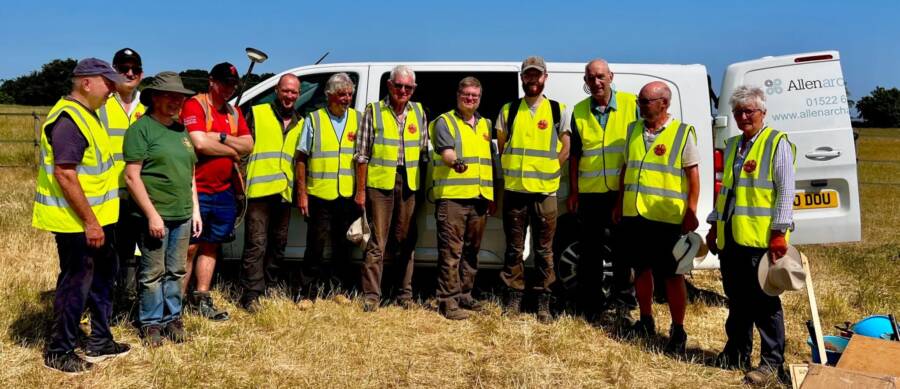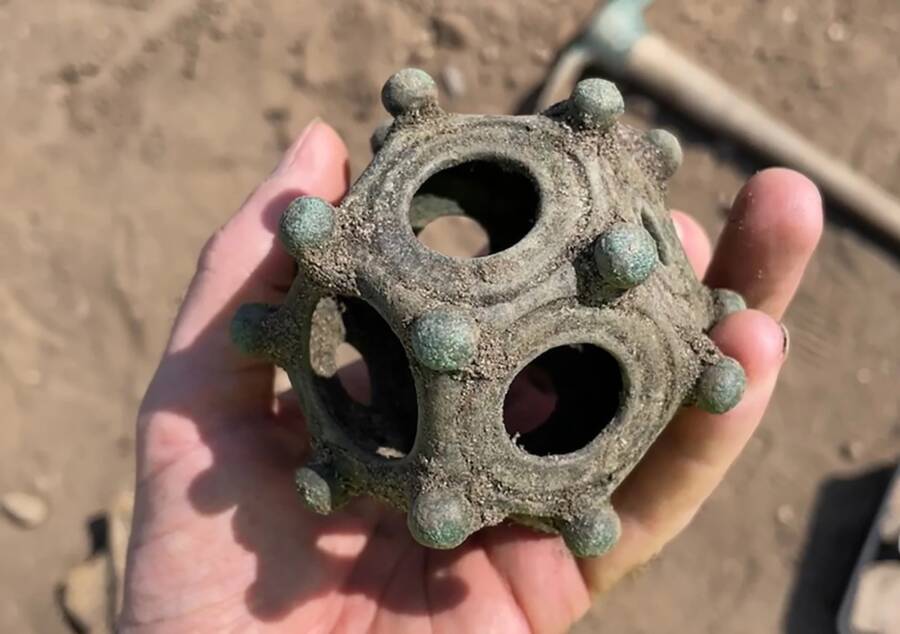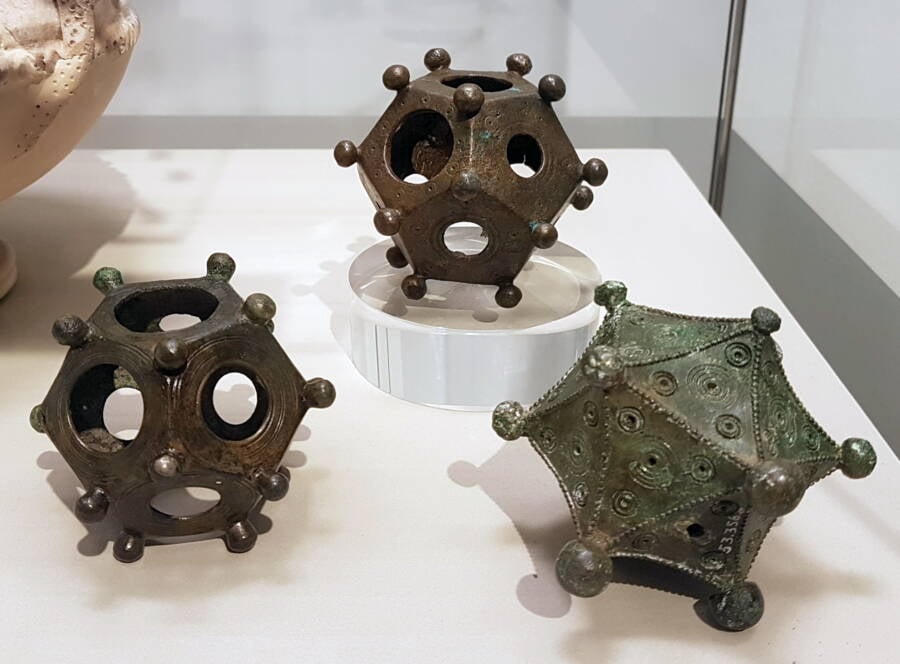Over one hundred Roman dodecahedrons have been found in Northern and Western Europe, but no one is sure what they were used for.

Norton Disney History and Archaeology GroupSome 130 such objects have been found in Europe, but just 33 in England.
Archaeologists working in England are used to uncovering Roman objects, from leftover nails to sprawling mosaics. But a team of researchers working in Lincolnshire came across an unusual Roman item during a recent dig: a 12-sided object known as a Roman dodecahedron.
Some 130 Roman dodecahedrons have been found in Europe over the centuries, but they’re considered “one of archaeology’s great enigmas.” Despite a number of theories about the objects, no one knows how ancient Romans used them.
Discovering The Dodecahedron In Lincolnshire
Last June, a group of amateur archaeologists from the Norton Disney History and Archaeology Group gathered around an ancient Roman pit in Lincolnshire to examine the objects deposited there. As they excavated the pit, they came across things like tiles, animal teeth, and pieces of pottery. Then, one of the archaeologists pulled a 12-sided orb out of the detritus.
It was a rare Roman dodecahedron.

Norton Disney History and Archaeology GroupMembers of the Norton Disney Village History and Archaeology Group on the day of the discovery. The man in the center of the frame is holding the dodecahedron in his hand.
The dodecahedron, made of interlocking pentagons punctured by 12 large circular holes, was probably buried around 1,700 years ago. Researchers believe it could date back as early as the first century C.E. It’s mostly made of copper, with tin and lead, measures about three inches long, and is in remarkably good condition.
“The Norton Disney dodecahedron is the only example found in the Midlands and is a particularly fine example,” the archaeology society wrote. “It is well cast, complete with no damage and in an excellent condition. It is an example of very fine craftsmanship, finished to a high standard.”
So what were Roman dodecahedrons used for? No one is sure — but there are plenty of theories about the purpose of these peculiar objects.
What Are Roman Dodecahedrons?

Norton Disney History and Archaeology GroupTheories abound about Roman dodecahedrons, but none have been definitely proven.
To date, around 130 Roman dodecahedrons have been discovered in Europe, 33 of which have been found in England. But they continue to baffle experts.
“There are no known descriptions of dodecahedra in Roman literature,” the Norton Disney History and Archaeology Group explained, “and therefore their purpose remains extremely unclear.”
The dodecahedrons have only been discovered north of the Alps, in former Roman territories like Britain, France, and Germany. For this reason, experts doubt that they had a purely military purpose. Otherwise, they would appear more frequently and more widely.
Some believe that the dodecahedrons could have been used as tools of measurement. However, they’ve been found in a number of different sizes — some dodecahedrons are just two inches long, whereas others are over four inches long — which would make them a poor measuring device. And while it’s possible that they were used as a tool, perhaps to sow grain, knit objects, or hold candles, most dodecahedrons don’t show much wear and tear.

Kleon3/Wikimedia CommonsTwo bronze Roman dodecahedrons that were found in Germany.
“A huge amount of time, energy and skill was taken to create our dodecahedron, so it was not used for mundane purposes, especially when alternative materials are available that would achieve the same purpose,” the archaeology society stated on their site. Instead, they suspect that it was used for “ritual and religious purposes.”
The society continued: “Roman society was full of superstition, something experienced on a daily basis. A potential link with local religious practice is our current working theory.”
The Lincolnshire dodecahedron will be on display in Lincoln Museum from May 4 until early September. In the meantime, the mystery surrounding Roman dodecahedrons continues.
After reading about the mysterious Roman dodecahedron discovered in England, discover the story of the Picts, the ancient Scottish people who held off the Romans. Or, learn about Queen Boudica, the queen of a Celtic tribe who led an uprising against the Romans.






